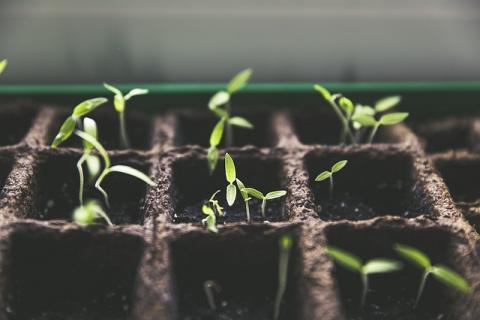
Planting a vegetable garden that remains free of aphids and bothersome bugs may seem difficult, but not with an age-old trick: companion planting. By planting certain vegetables with their companion plants, herbs or flowers, some form of cultural benefit is created. Planting cucumbers underneath sunflowers, for example, helps both plants; the cucumbers take up the otherwise unused space underneath the sunflowers, while the sunflowers provide shade for the cucumbers. The cucumbers keep moisture in the soil, which benefits the sunflowers. As such, both produce higher yields for you, the gardener!
Below, I’ve listed some of the best plants for fall gardening. Don’t think that just because the temperature has dropped and pumpkins are appearing that gardening is over. Happy planting!
1) Broccoli + Beans
Broccoli is a terrific plant for cooler temperatures. Warm summer temperatures can signal growth for the broccoli–meaning that energy is spent growing up, rather than out. Cooler temperatures send the signal that the broccoli can grow its crown, meaning more of the tasty stuff for you. Pair broccoli with beans for an added nitrogen fix. Most plants rely on nitrogen through the use of fertilizers, but beans are nitrogen-fixers, meaning that they store nitrogen in nitrogen nodules, located in their roots. As the beans begin to die, nitrogen is released into the soil which helps the broccoli and other brassicas, like cabbage, kale, and cauliflower, grow strong!

2) Cabbage + Rosemary
Together these two plants might not taste great, but in the garden they’re a feast for the senses! Cabbage can be frequently visited by cabbage moths, a non-native species that lays its eggs on cabbage leaves. Once hatched, the caterpillars devour the cabbage, leaving large, unattractive holes in the plant. Rosemary, however, deters cabbage moths and other pests from your garden–naturally.

3) Lettuce + Radish
Radishes and various types of lettuces are generally thought of as springtime vegetables, but there’s no reason why you can’t grow them in the fall–especially if you live in the southwest or southeast United States. Radishes are one of the fastest growing vegetables–from germination to harvesting, the 4 week cycle is short. Plant radishes next to lettuces like romaine, green or red leaf, and bib to ensure tender leaves.

4) Beets + Kohlrabi
Beets are a delicious fall treat, especially when roasted until caramel-sweet, but what about kohlrabi? This lesser known vegetable is a member of the brassica family and closely related to cabbage. Eaten both raw and cooked, kohlrabi makes a great companion plant for beets as the two plants grow at different levels, maximizing garden space which can be an issue for those pursuing container gardening. For a cozy, fall recipe, steam and blend kohlrabi into a stew, or try it shredded into savory pancakes!









